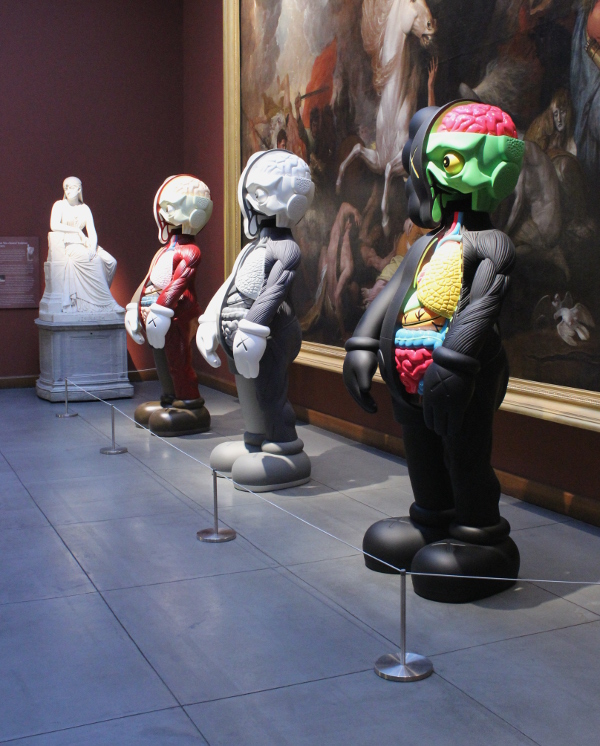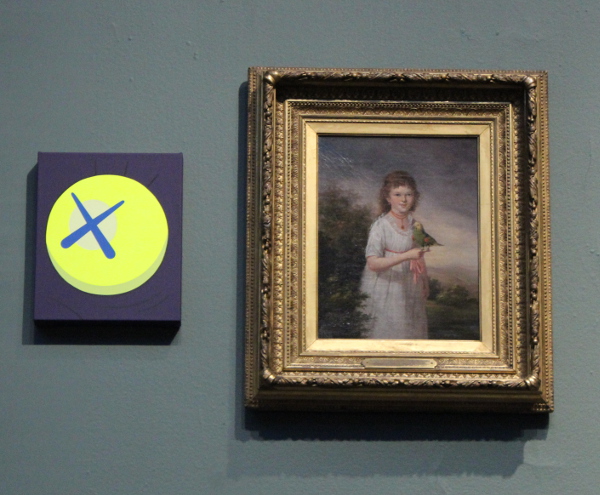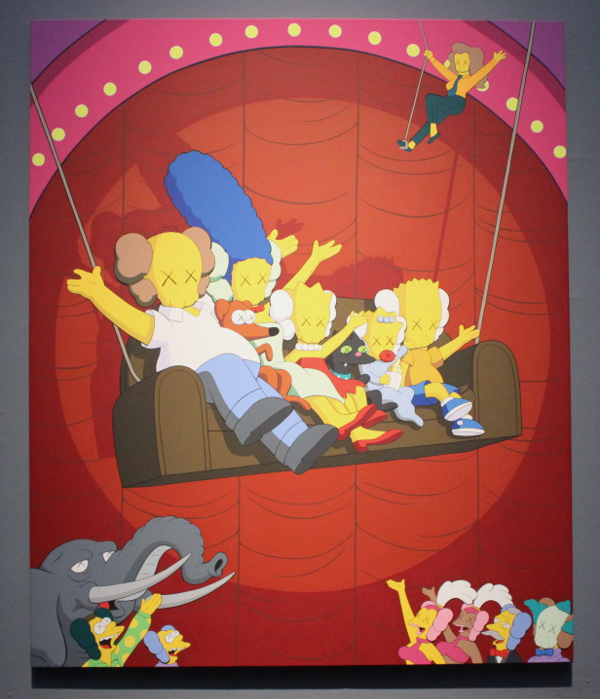
KAWS @ PAFA brings light to aesthetic divides
Upon entering the halls of the Pennsylvania Academy of the Fine Arts (PAFA), it’s hard to deny the surprising contrast of the images on view during the “KAWS @ PAFA” show currently on display through January 5. Side by side with historic works of sculpture and oil painting, the pop-culture heavy, brightly colored pieces by former graffiti artist and cartoonist KAWS (Brian Donnelly) offer an antithesis to the Realist and Modernist works that claim permanent residence inside PAFA’s Historic Landmark Building.
At the top of the facility’s central staircase, the marble statues that typically rest between massive paintings in the atrium area have some bulbous, plastic counterparts for a little while. Two tall, bunny-eared figures stand like sentinels in front of a pair of the building’s massive columns, one in flat black, and the other in shades of white and pink. Their gloved hands and chubby feet hearken to early animation’s Vaudevillian roots and suspendered Mickey Mouse-like characters. Where these types clearly differ is that most of the sculptures by KAWS possess skull and crossbones as heads and X’s for eyes; they are apparently dead, but in the cutest way possible.
KAWS slices cross-sections into three of his gigantic figures.
In another of his constructions, KAWS nods to the Michelin man with a rotund assemblage of black bagel forms for a piece entitled “Chum.” And if there were any doubt that these lifeless forms may have once been alive, KAWS dissects three of them in a row, exposing their still-caricatured but considerably more realistic muscles and organs in not-so-ghastly cutaways. In a nearby room, “The Gross Clinic” by Thomas Eakins accosts us with bloody images of a more true to life anatomy lesson, further expanding the lexicon of images from which KAWS peels back his layers of artistic reference.
KAWS places an eye with an X-shaped pupil next to a portrait for maximum contrast.
Originally modeled as actual toys, the formerly moving parts of these oversized action figures make their initial designs clear, while their pastel colors, rounded faces, and nearly nauseatingly adorable personas call on the kawaii aesthetic of Japan, where they are still quite popular.
KAWS, “Tondos [3 individual works not yet titled].”Elsewhere, KAWS puts acrylic to canvas for paintings that verge on nearly non-objective patches of colors and shapes. Some require a moment of scrutiny before the eyes or teeth in the close-up views become apparent. Most often, these lens-mashing pictures seem to depict Spongebob-like creatures with sickeningly purple, greenish, or pale faces and X-shaped pupils. All of them are notably unframed, as opposed to the gaudy, gilded frames that surround the permanent collection’s paintings, causing even starker divides between the worlds of KAWS and the long dead artists that he shares the space with.
KAWS, “Untitled (Kimpsons).”
KAWS also fills an entire room with parodies (unabashed ripoffs?) of one of America’s most beloved animated families, and longest running cartoon/sitcom, The Simpsons. Taking their already postmodern opening sofa sequence and further appropriating it, he copies their bodies almost exactly, but replaces their faces with the dead-eyed boneheads of his own design. Placing these spoofs of spoofs around the time-tested and revered art of the PAFA collection puts each at odds with one another, and offers new context to each. Does art from another century really deserve any more or less attention that that of a living artist? How has technology and fabrication changed the face of the art world? What constitutes a recycled idea as opposed to blatant theft?
KAWS hangs his garish paintings salon style, in direct reference to PAFA’s permanent collection.
Through a collision of mass-producible action figure designs, graffiti sensibility, and contemporary art with the realms of more classical or modern styles, we get to enter a no-man’s land in which the playing fields between many schools of thought are leveled before us. Love it or hate it, the rifts of taste in the art world aren’t going away any time soon, and KAWS @ PAFA demonstrates this divide splendidly.
PAFA is located at 118-128 North Broad St., Philadelphia; 215-972-7600; pafa.org.
Recent Content
-
Artsarticle ·
-
Artsarticle ·
-
Artsarticle ·


![KAWS, "Tondos [3 individual works not yet titled]."](https://knightfoundation.org/wp-content/uploads/2013/12/KAWSTONDOS.jpg)


